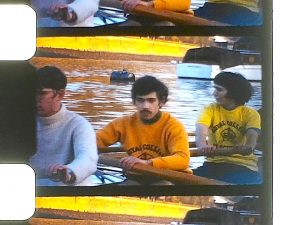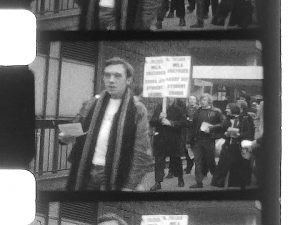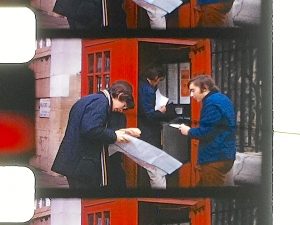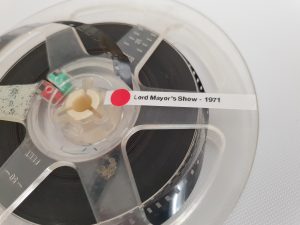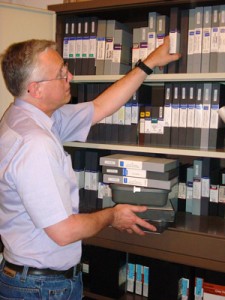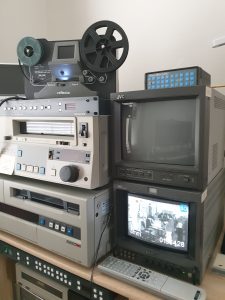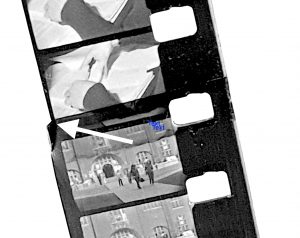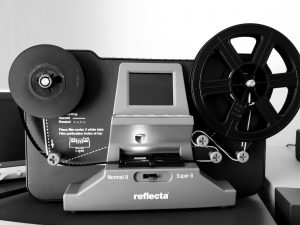 Yet more discoveries from some recent digitisation. The 8mm film reel (shown at the bottom) was used in the 1971 Christmas edition of STOIC’s TOPIC news programme, for which I have the (videotape) audio. This 8mm reel was also a compilation of items already shown earlier in that term. I appear to have some original location audio for some of the filmed items on the audio tape (shown at the top). Once more, a large number of these filmed items were in colour, but only ever seen via black and white TV. It’s now just a case of trying to see it I can match things up. If I can succeed then we have film of: “Morphy Day Rowing”, “Silly Football”, “Imperial College’s Day of Action”, “Motor Trials” and more. Some screen shots from these items can be seen below. And if, nearly 50 years ago, you were taking part or involved in any of this, then please do let me know. Contact details at the end of this blog post.
Yet more discoveries from some recent digitisation. The 8mm film reel (shown at the bottom) was used in the 1971 Christmas edition of STOIC’s TOPIC news programme, for which I have the (videotape) audio. This 8mm reel was also a compilation of items already shown earlier in that term. I appear to have some original location audio for some of the filmed items on the audio tape (shown at the top). Once more, a large number of these filmed items were in colour, but only ever seen via black and white TV. It’s now just a case of trying to see it I can match things up. If I can succeed then we have film of: “Morphy Day Rowing”, “Silly Football”, “Imperial College’s Day of Action”, “Motor Trials” and more. Some screen shots from these items can be seen below. And if, nearly 50 years ago, you were taking part or involved in any of this, then please do let me know. Contact details at the end of this blog post.
Colin Grimshaw November 2020
